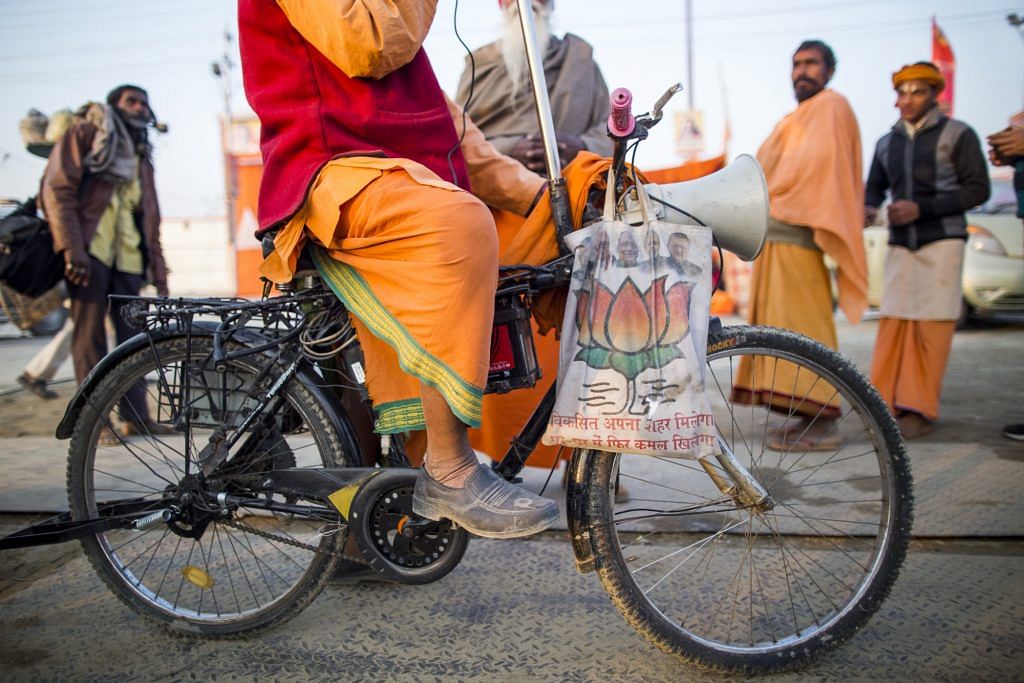Amartya Sen | Nobel laureate in economics, professor of economics and philosophy at Harvard University
The Indian Express
Amartya Sen raises several concerns over the 2019 Lok Sabha elections verdict. He says since BJP cornered 37 per cent of the vote, there should have been more and stronger alliances among opposition parties. Also, the coalitions that emerged ought to have had an “agreed vision” rather than being just anti-BJP. He regrets the absence of discussion on the “ideological difference” between BJP’s perspective – based on its “Hindu identity”— and the integrated vision of a “common identity of Indians”, regardless of religion.
On the BJP, Sen says the party and PM Modi have “excellent grounds” to be happy with their victory, but they ought to be disappointed by media criticism worldwide of the “ways and means of securing BJP’s victory”. He is concerned by the lack of a “level-playing field” for all political parties — he cites Election Commission rulings, BJP’s money power and state media coverage as examples of “unequal favours” to BJP. These “asymmetries” should be removed, says Sen. He concludes that BJP must consider what sort of a regime it wants to run and “how it is viewed across the world”.
Reforms for a New India: How to steer transformative economic change in Modi’s second term
Arvind Panagariya | Professor, Columbia University, &
B Venkatesh Kumar | Professor, Tata Institute of Social Sciences
The Times of India
The authors write on how the next five years are most critical for India to realise its “destiny” in its race towards double digit growth rates. Growth has to be driven by private entrepreneurs and not necessarily by the government — the government should limit itself to “creating a healthy business environment by bringing about appropriate changes in laws, rules and procedures”.
They stress the need to identify six key areas of reforms such as labour laws, land laws, higher education, international trade, privatisation, banking reforms and centrally-sponsored schemes with one bureaucrat heading each time-bound mission.These missions should be given a budget and the autonomy to utilise it.
Government’s key agenda must be to accelerate growth
C. Rangarajan | Former chairman of the Economic Advisory Council to the prime minister and a former RBI governor
The Hindu
Rangarajan writes on the need to pay “serious attention to the economy” with data indicating a slowdown in growth and fall in corporate investment. He points out that along with reviving private investment, a structured roadmap for public investment by state-run firms will be the key to reviving growth.
Faster investment and faster growth will also help to generate employment. In the medium term, successful implementation of the GST and the bankruptcy code will help to quicken growth. He adds minimum income support is a step in the right direction to support the poor, but should be accompanied by removing some of the subsidies.
Don’t dilute the RTI and the forest rights Acts
Gautam Bhatia | Advocate in the Supreme Court
Hindustan Times
Bhatia writes laws such as the Right to Information Act (RTI), 2005, and the Forest Rights Act (FRA) 2007, which completed 10 years in implementation during the BJP’s first term, should not be diluted further as the 2014-2019 period saw “unfortunate attempts to undermine these laws” — a bill was introduced to amend the RTI Act and a leaked report hinted at plans to alter the forest rights regime. He hopes the RTI and the FRA will be “strengthened” and “protected” under a second Modi regime, arguing that to ensure they are not diluted in future requires “popular mobilisation” not judicial challenges.
Policy, Put Your Analytics Kettle On
Pulak Ghosh | professor of IIM-Bangalore, and Soumya Kanti Ghosh, Group chief economic adviser, SBI
Economic Times
The authors write on the need for India to embrace emerging technology and big data in a much bigger way to achieve the government’s goals with precision and swiftness. For instance, proper use of GST data will help to enumerate sectors that contribute the maximum revenues and can also be used to measure the GDP. Technology and data can be used to make far more accurate crop yield predictions by using crop cutting images and satellite data. They can also be used to make Ayushman Bharat more successful and for the development of real-time skills. Real-time information can accelerate the speed at which policymakers can implement change.
Why shutting down the internet is no longer an option
Rahul Matthan | Partner at Trilegal
Mint
Matthan writes on digital technology that was once a luxury reserved for the privileged class and is now “ubiquitous”. He says while in urban areas, digital platforms have insinuated themselves into everyone’s way of life and become a reliable substitute for existing infrastructure, in rural areas it has become the lifeline that connected people. “We’ve reached a point where these technologies aren’t so much a nice-to-have, but an essential part of the infrastructure on which our national growth depends”, he writes. This means the shutdown of internet can no longer be an option employed by the government. He hopes as the new government announces steps to hasten the pace of digital adoption, it also implements safeguards simultaneously.
